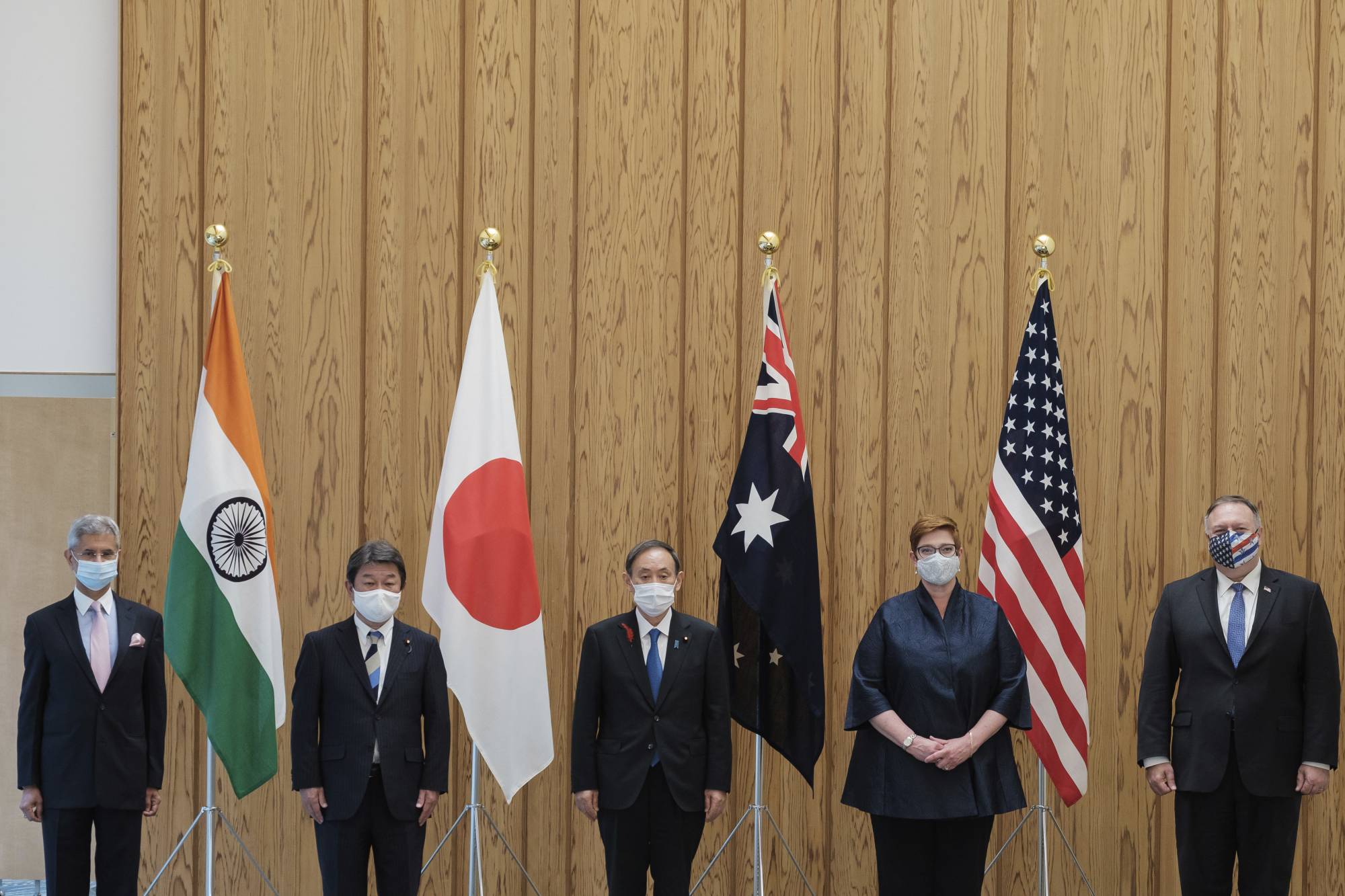As foreign ministers from the Quadrilateral countries — Japan, the United States, Australia and India — met in Tokyo this week, speculation soared about the purpose of the group. It is alternatively a gathering of concerned countries to contain a revisionist China, a forum to promote a Free and Open Indo-Pacific region and even the cornerstone of a nascent regional security architecture. The "Quad" (as it is called) can be all those things but its future is uncertain, and its eventual form and content depend on how it is managed.
The Quadrilateral Security Dialogue was launched in 2007 during Prime Minister Shinzo Abe’s first term in office. It collapsed the following year when Australia withdrew amidst criticism from Chinese officials that the group was an anti-China bloc and as doubts grew over whether the participants shared aims and objectives.
Mounting concern about Chinese behavior prompted the four countries to try again. They resurrected the Quad in 2017 and it has met at various levels ever since. This week’s meeting was the second ministerial get-together; the first was last year in New York.

















With your current subscription plan you can comment on stories. However, before writing your first comment, please create a display name in the Profile section of your subscriber account page.